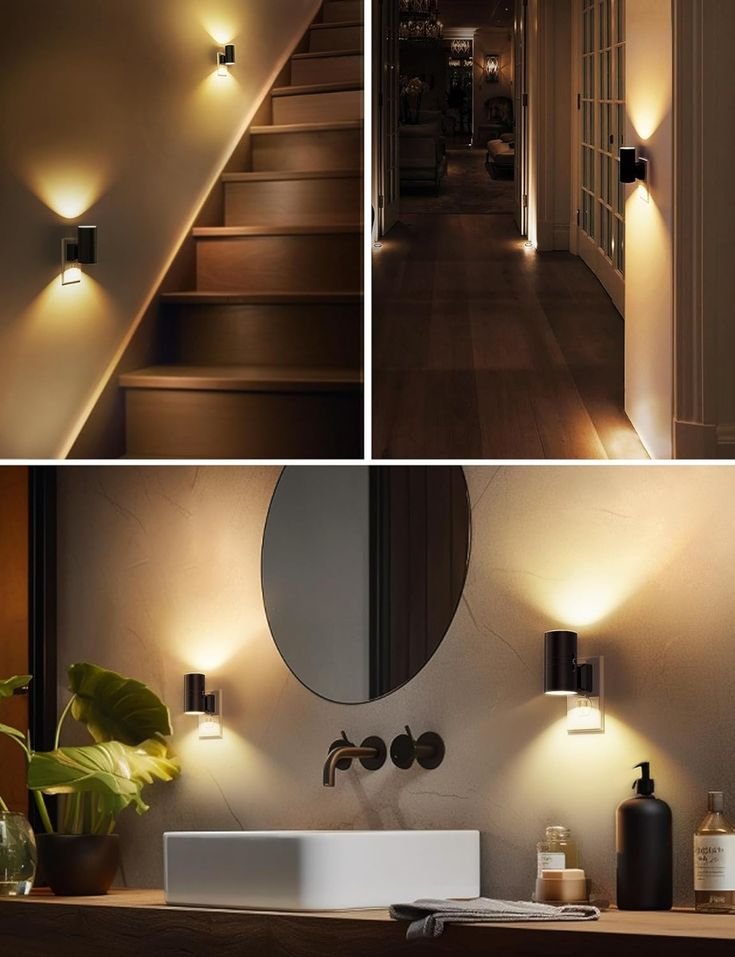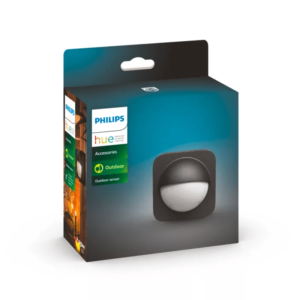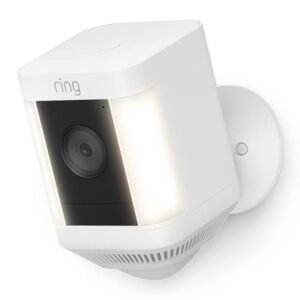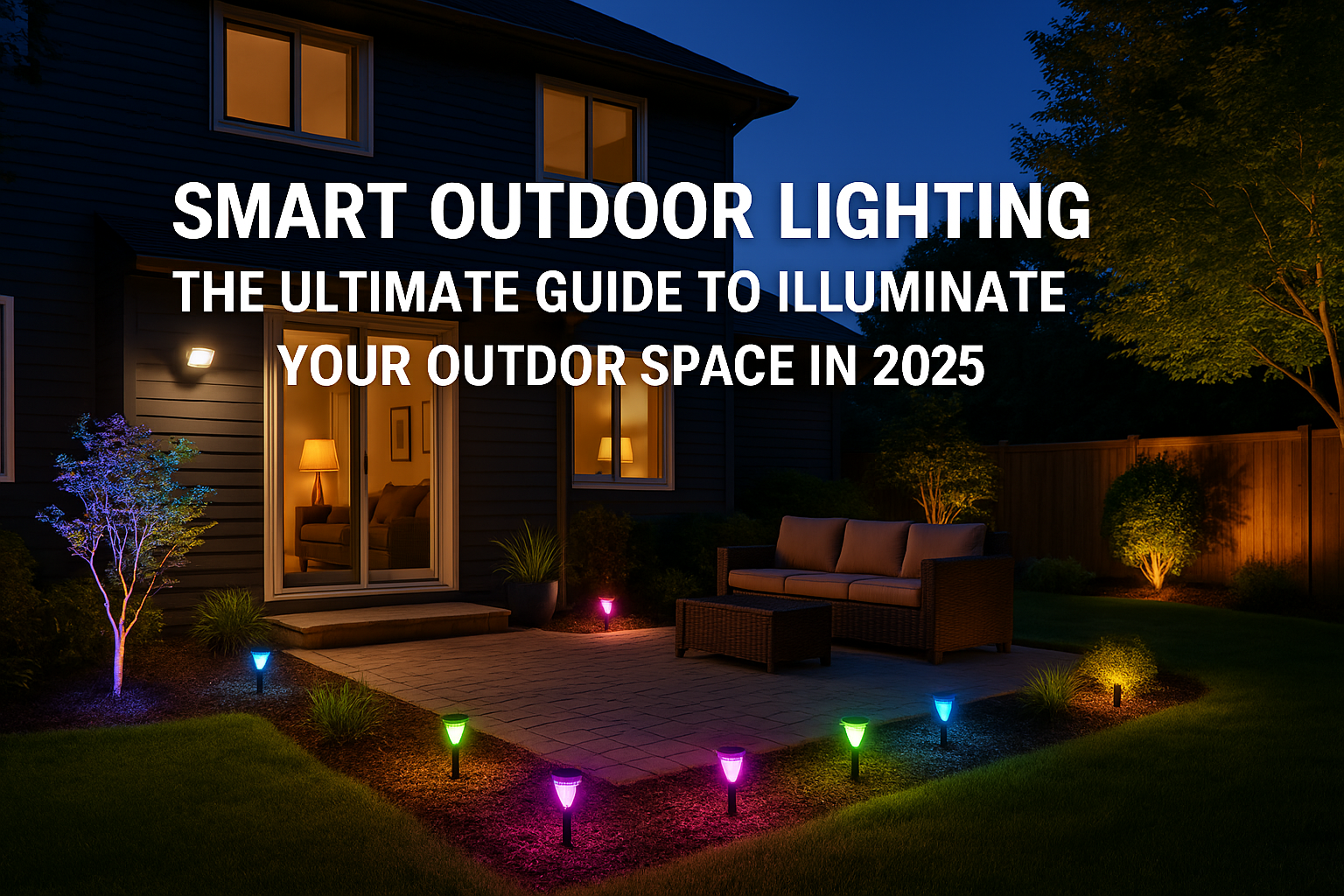How Dusk-to-Dawn Smart Sensors Actually Work

Outdoor lighting can completely transform the safety, functionality, and aesthetics of your home’s exterior. But remembering to manually switch your outdoor lights on and off can be, well, a hassle. That’s where dusk-to-dawn smart sensors come in. They automate your lighting, turning it on when the sun sets and off when the sun rises, all while saving you energy and providing seamless convenience.
If you’re considering smart outdoor lighting, this guide will walk you through how dusk-to-dawn sensors work, highlight their benefits, and show you how to use them effectively.
What Are Dusk-to-Dawn Smart Sensors?
Definition and Function
Dusk-to-dawn smart sensors, often called photocell sensors or ambient light detectors, are devices designed to control outdoor lighting automatically based on natural light levels. They ensure that the lights are activated at dusk when it gets dark and deactivated at dawn when daylight returns.
Light Sensitivity and Ambient Detection
The core component of these sensors is their ability to detect ambient light levels. Using a built-in photocell, these sensors adjust based on the natural cycle of sunrise and sunset. They’re exceptionally sensitive and can distinguish between darkness caused by dusk and temporary interruptions like passing shadows or car headlights.
Let your lights think for you explore dusk-to-dawn sensors for smarter, effortless illumination.
How Do Dusk-to-Dawn Smart Sensors Work?
The magic behind dusk-to-dawn smart sensors is in their photocells. Photocells, or light-dependent resistors (LDRs), are semiconductor devices that react to changes in ambient light.
- Built-in Photocells:
Photocells measure the intensity of light in the surroundings. When exposed to sufficient daylight, the resistance in the photocell decreases, signaling the circuitry to keep the connected lights off.
- Transition from Day to Night Detection:
As light fades in the evening, the resistance within the photocell increases. Once the light levels drop below a specific threshold, the sensor flips an internal switch to turn on the lights.
- Power Switching Automation:
This process is completely automated. The sensor continues monitoring the light levels throughout the night, ensuring your lights adjust perfectly for periods of darkness.
Additionally, advanced models come equipped with adjustable thresholds, timers, or dimming features, making them highly customizable to fit your needs.
Dusk-to-Dawn vs. Motion Sensors: What’s the Difference?
While dusk-to-dawn sensors and motion sensors are both used to control outdoor lighting, they function very differently and serve distinct purposes.
- Dusk-to-Dawn Sensors:
-
- Trigger based on changes in natural light levels (dusk and dawn).
- Keep lights on throughout the night for consistent illumination.
- Ideal for security lighting, pathways, or decorative purposes.
-
- Motion Sensors:
-
- Activate lights only when movement is detected in their range.
- Turn lights off after a short period of inactivity.
- Best for conserving energy and alerting you to activity.
-
Think of dusk-to-dawn sensors as your continuous, reliable source of night lighting, while motion sensors act as “on-demand” lights for intrusions or activity detection.
If you’re torn between the two, many outdoor lighting systems now offer hybrid solutions that combine dusk-to-dawn functionality with motion-activated lighting for maximum efficiency.
Benefits of Using Dusk-to-Dawn Sensors
- Energy Efficiency:
By switching on your lights only when needed, dusk-to-dawn sensors prevent unnecessary energy use during the day. They’re an eco-friendly choice and can lower your electricity bills.
- Hands-Free Lighting:
You’ll never have to worry about remembering to switch lights on or off again. These sensors handle it all automatically, giving you one less thing to think about.
- Enhanced Security:
Consistent lighting discourages intruders and ensures well-lit entryways, garages, and pathways, keeping your property safer at night.
Let your lights think for you explore dusk-to-dawn sensors for smarter, effortless illumination.
Best Places to Use Dusk-to-Dawn Sensors
There’s no one-size-fits-all solution when it comes to outdoor lighting, but there are a few ideal locations for installing dusk-to-dawn sensors:
- Porches and Entryways: Ensure warm lighting welcomes you home after dark.
- Pathways: Safely illuminate walkways to prevent trips and falls.
- Garages and Driveways: Increase visibility for parking and security.
- Gardens: Highlight landscaping features and create a magical ambiance.
Recommended Smart Models with Dusk-to-Dawn Features
If you’re ready to invest, here are some great product recommendations to consider:
- Philips Hue Outdoor Sensor:

This model pairs seamlessly with smart assistants like Alexa or Google Assistant and integrates into your wider smart home system. It offers dusk-to-dawn functionality combined with motion detection for added versatility.
- Ring Smart Lighting:

Known for its robust security features, the Ring system includes a variety of lights with dusk-to-dawn sensors to simplify your outdoor lighting needs.
Both options allow you to fine-tune settings, such as light intensity and duration, via mobile apps, giving you total control at your fingertips.
Integration with Smart Assistants and Lighting Systems
Modern dusk-to-dawn sensors can do much more than turn your lights on and off. Many models integrate seamlessly with smart ecosystems such as Amazon Alexa, Google Assistant, or Apple HomeKit. This enables you to:
- Control lights through voice commands or smartphone apps.
- Set schedules and timers for custom lighting preferences.
- Sync with other smart devices, like cameras or alarms, for a fully automated home.
For tips on maintaining a reliable connection for your smart lighting, check out our guide on Wi-Fi solutions for outdoor sensors [link to the internal article].
FAQ About Dusk-to-Dawn Sensors
- Do dusk-to-dawn sensors need Wi-Fi to work?
No, most sensors operate independently of Wi-Fi. Smart models with app connectivity, however, may require Wi-Fi for advanced features.
- How do these sensors detect light levels?
They rely on built-in photocells to measure ambient light and determine when to activate or deactivate connected lights.
- Are they weather-resistant for outdoor use?
Yes, most outdoor dusk-to-dawn sensors are designed to withstand rain, heat, and other weather conditions. Always check for weatherproof ratings like IP65.
- Can dusk-to-dawn lights be overridden manually?
Absolutely. Some models come with a manual override that lets you switch the lights on or off as needed.
- Are they more efficient than motion sensors?
They’re highly energy-efficient for consistent lighting needs but may not conserve as much energy as motion sensors, which only activate when movement is detected.
Light Up Your Nights with Dusk-to-Dawn Sensors
Automating your outdoor lighting doesn’t just save energy, it makes life more convenient and enhances your home’s security. By understanding how dusk-to-dawn smart sensors work, you can take a smart step toward elevating your outdoor spaces with minimal effort.
Let your lights think for you explore dusk-to-dawn sensors for smarter, effortless illumination.
